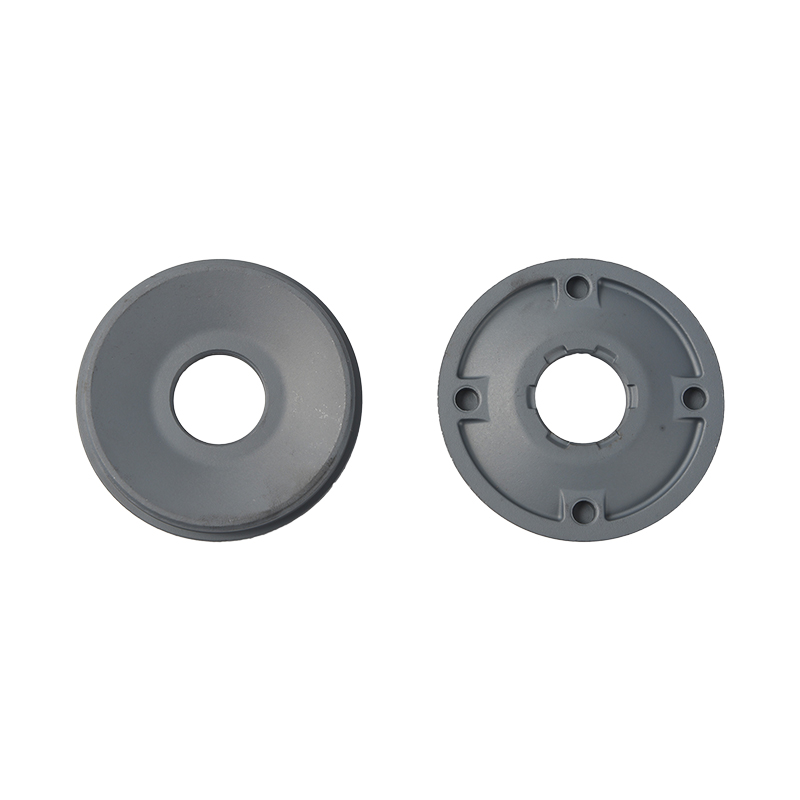Powder metal parts can undergo various surface treatments and coatings to enhance their properties, improve performance, and increase durability. Some commonly applied surface treatments and coatings include:
1.Plating:
Plating processes, such as electroplating or electroless plating, are employed to bestow powder metal parts with enhanced corrosion resistance and aesthetic appeal. By depositing a layer of metals like nickel, zinc, or chrome onto the surface, these processes create a barrier against environmental factors, ensuring prolonged durability and functionality of the components.
2.Nitriding:
Nitriding, a surface-hardening process, involves diffusing nitrogen into powder metal parts. This procedure results in the formation of a robust, wear-resistant layer, significantly augmenting the parts' hardness, fatigue resistance, and overall longevity. Nitriding finds extensive application in components subject to high-stress conditions, ensuring superior performance under challenging environments.
3.Heat Treatment:
Powder metal parts can undergo diverse heat treatment processes, including carburizing and annealing. Carburizing enriches the surface with carbon, enhancing hardness and wear resistance. Annealing, on the other hand, optimizes the microstructure, leading to improvements in mechanical properties such as hardness, strength, and toughness. These tailored heat treatments are pivotal in achieving desired material characteristics for specific applications.
4.Hard Chrome Plating:
Hard chrome plating is a specialized technique utilized for powder metal parts exposed to abrasive wear. This process results in a durable and wear-resistant chrome layer, significantly increasing the components' lifespan. Parts subject to abrasive environments, such as hydraulic piston rods, benefit greatly from the hardness and corrosion resistance imparted by hard chrome plating.
5.Powder Coating:
Powder coating provides powder metal parts with a robust, corrosion-resistant finish. The process involves electrostatically applying a dry powder, which is then cured under heat, forming a smooth and durable surface. Powder coating not only enhances the aesthetics of the parts but also ensures superior protection against corrosion, chemicals, and impact, making it ideal for a wide array of applications, including automotive and consumer goods.
6.Ceramic Coatings:
Ceramic coatings, comprising materials like alumina or zirconia, are applied to powder metal parts to augment their wear resistance, thermal insulation, and corrosion resistance. These coatings are particularly valuable in high-temperature applications, providing an additional layer of protection against abrasive wear and harsh environmental conditions.
7.Teflon Coating:
Teflon (PTFE) coatings offer non-stick properties and exceptional chemical resistance. When applied to powder metal parts, Teflon coatings reduce friction, prevent adhesion, and enhance the parts' resistance to chemicals and extreme temperatures. This makes them invaluable in applications where low friction and easy release are paramount, such as in the manufacturing of cookware and industrial machinery.
8.Anodizing:
Anodizing is a process primarily used for aluminum powder metal parts. By creating a controlled oxide layer on the surface, anodizing significantly improves corrosion resistance. Additionally, anodized parts gain an attractive finish and increased durability, making them suitable for aerospace, architectural, and decorative applications.
9.Passivation:
Passivation is a chemical process employed on stainless steel powder metal parts to remove free iron from the surface, enhancing their corrosion resistance. By forming a passive oxide layer, passivated stainless steel parts are shielded from rust and other forms of corrosion, ensuring prolonged service life, particularly in harsh or corrosive environments.
10.Abrasive Blasting:
Abrasive blasting techniques, such as sandblasting or shot peening, are utilized to prepare powder metal parts' surfaces. By removing impurities, oxides, or existing coatings, abrasive blasting creates a clean surface conducive to subsequent treatments like plating or painting. Additionally, shot peening induces compressive stress in the surface, enhancing the parts' fatigue resistance and overall structural integrity.
Powder metal parts -end plate with threaded hole

Powder metal parts -end plate with threaded hole



 简体中文
简体中文 English
English













